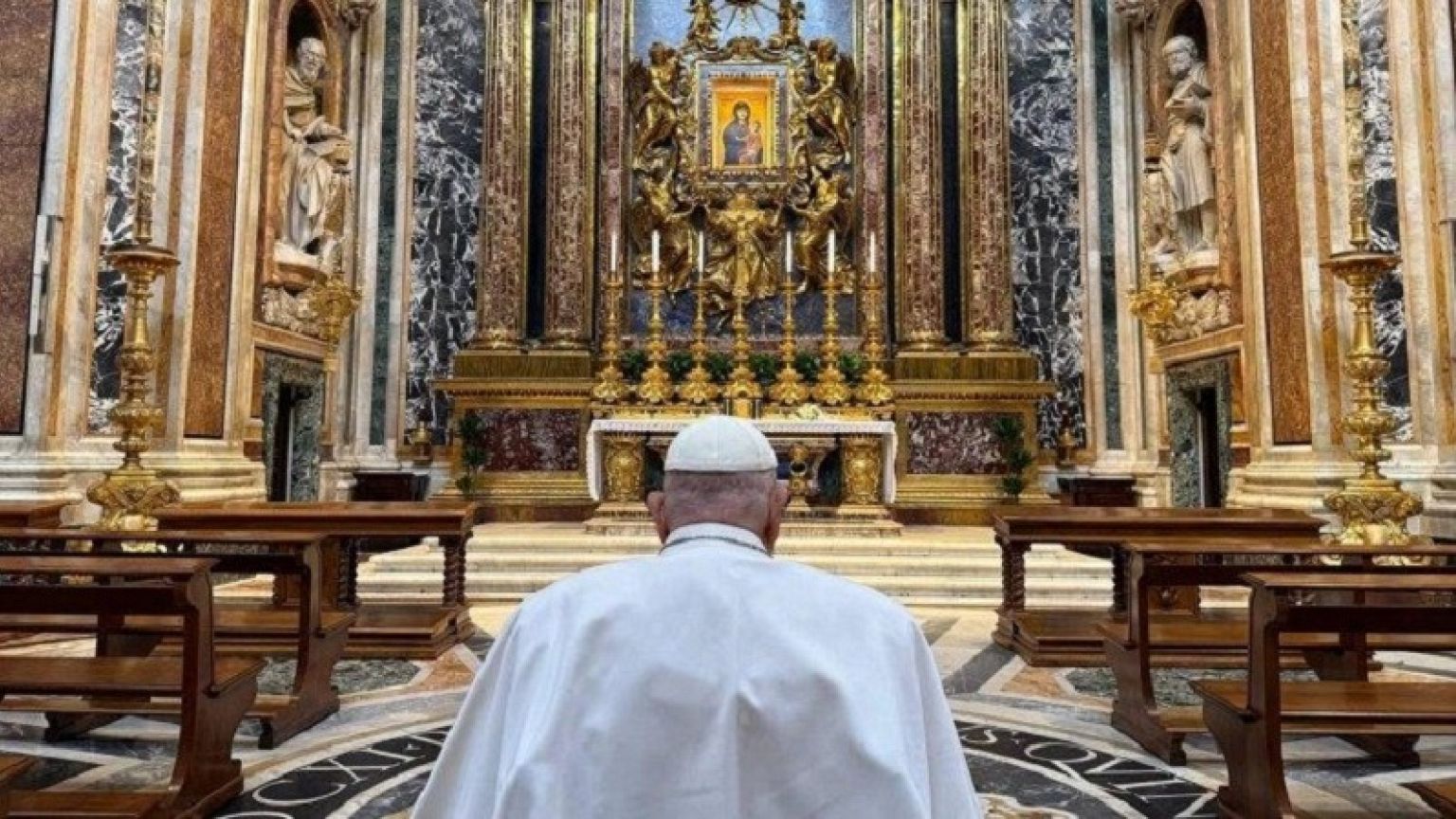|
Reply |
Message 1 of 35 on the subject |
|
    
Ahhh … movie hype. Westminster Abbey, unlike most Anglican churches and cathedrals, is under the direct control of England’s monarch. Actor Ian McKellen adds his own conspiracy theory — that the Queen kept movie cameras out of Westminster Abbey during the filming of The Da Vinci Code.
Originally the abbey church of a Benedictine monastery, which closed in 1539, Westminster Abbey is one of England’s most important Gothic structures and a national shrine. Its official name is t he Collegiate Church of St. Peter, but this name is rarely used.
Situated west of the Palace of Westminster, Westminster Abbey is the traditional coronation site for English monarchs. It was originally home to a Norman monestary, of which there are little or no traces left. The Abbey standing today was built by King Edward the Confessor around 1050, and was consecrated in 1065.
The ancient Abbey is filled with monuments and tombs, including that of Sir Isaac Newton, whose grave plays a minor part in The Da Vinci Code. Any Abbey visitor is free to seek out what the book refers to as this tomb of “a knight a Pope interred.” Feel free to remember, or ignore, the fact that Alexander Pope (“a Pope”) didn’t really read the eulogy at the funeral of the great scientist.
Having gawked at Sir Isaac’s final resting place, Da Vinci Code fans make their way to the Abbey’s octagonal Chapter House, site of a dramatic showdown in the book. The Chapter House is where Robert Langdon, the book’s heroic main character, tosses a cryptex cylinder toward the ceiling when evil Sir Teabing threatens to shoot co-hero Sophie Neveu.
The scene is pure fiction, but an event that did happen here had tremendous historical significance. In 1257, the King’s Council met in the Chapter House. The Council was the precursor to the English Parliament, and from it sprang a lineage that can be traced forward all the way to the United States Congress and other modern legislatures, worldwide.
  
Moon Phase for Thursday Dec 25th, 1642
The current moon phase for December 25th, 1642 is the Waxing Crescent phase.
On this day, the moon is 3.88 days old and 19.91% illuminated with a tilt of 42.196°. The approximate distance from Earth to the moon is 364,346.05 km and the moon sign is Aquarius.
|
|
|
|
Reply |
Message 21 of 35 on the subject |
|
Highlighting not only the Moon goddess Diana...

...but also the Aurora mass shooting this summer on the 43rd anniversary of the historic Moon landing (July 20). As discussed before, "Aurora" happens to be the name of a pregnant girl in Babylon A.D. who gives birth to messianic twin babies.

Michael Jackson is another famous "Moonwalker" whose birthday August 29 coincides with our second anchor date of the window.
Martian William
Time: August 28, 2012
Themes: Mars, British Royal Family (William)

Aug 28 will.i.am teams with NASA to debut song from Mars
William (will.i.am) and Mars.... Just days after Curiosity's interaction with the Martian "Coronation Stone." Basically implying "Coronation of Martian Prince William" or more archetypally the rebirth of the Jacobite "Grail" bloodline on the throne.
The very next day, or simultaneously on August 28-29, the birth (water breaking) event took place...
The Isaac Code
Time: ~August 26-29, 2012
Themes: British Royal Family (Kate), Birth, Apple
Right on "August 29"...
 Aug 26 Isaac Death Toll In Haiti Rises To 9 Aug 26 Isaac Death Toll In Haiti Rises To 9
Aug 26 Tropical Storm Isaac Should Rival Hurricane Katrina
Aug 27 Eerie similarities: Isaac follows track of Katrina
Aug 27 Isaac churns in Gulf along Katrina's path

Aug 28 Isaac makes landfall in southeastern Louisiana
Aug 28 Isaac hits US Gulf Coast, heads for New Orleans
Aug 29 Hurricane Isaac makes 2nd landfall
Aug 29 Storm surge overtops levee, 12-foot flood...

Aug 30 Dam Failure Feared After Tropical Storm Isaac
Everyone could see that Isaac was a Katrina clone, ravaging the same region on the same date, exactly 7 years later. An echo anticipated in Aurora Code 2012 (7/21/2012):
August 29 - Babylon A.D. release date - adds to the pregnancy/birth theme as it is the birthday of the ancient Egyptian goddess Hathor, associated with the Milky Way/Nile and the flood ("water breaking") and considered a herald of imminent birth.
In 2005, August 29 was the exact date of New Orleans' "water breaking" impact moment when Hurricane Katrina made landfall there... right at the midpoint of a Galactic-Mayan timeline directly involving the year 2012.

"Katrina" means "Catherine" as in Catherine"Kate" Middleton, i.e. the UK princess whose pregnancy/childbirth we've been long projecting for the Mayan window of 2012-2013 on our sites (Etemenanki/STRUG). [...]
"Maya" is today Mexico [as in "Gulf of Mexico"] and the name "Mexico" via Mextli refers to a "god of war" which in Roman mythology is Mars. "Mexico" via Mexihco means "Place at the Center of the Moon" implying "in the womb of Diana". [...]
...I'm going to go ahead and say that I see the latter part of August as a window for big things. Anchor dates ~August 24 and 29.
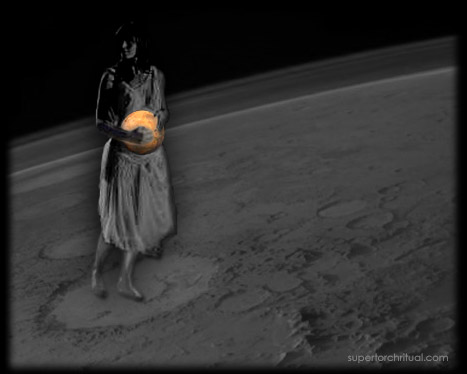
So we had the symbolism down beforehand and Isaac was a dramatic pattern fulfillment, the reality of which was confirmed and enhanced by additional eye-popping clues dropped on the other side of the Atlantic that same day...
It was the Paralympics opening ceremony in London on August 29 where Isaac Newton was being honored for his contribution to the expansion of human knowledge.

[Graphic from Paralympics opening ceremony]
Two Isaacs, same message. Isaac Newton is all about gravity and the (falling) apple, implying the following:
- "Gravity" is related to the Latin word gravidity (meaning "heavy") which is a scientific term for the state of pregnancy.
- "Apple" is the meaning of the term "Avalon" which is King Arthur's mythical "underworld" where he is said to be hibernating and would return from as the Once and Future King ("rebirth"), i.e. a drama unfolding at this time semi-literally through the rise of the Kate-William-baby trinity.

[Many apples during Paralympics opening ceremony]

A big exclamation mark came toward the end of the show in the form of a giant naked, pregnant woman based on an actual sculpture in London called "Alison Lapper Pregnant". I'm not kidding, see for yourself:
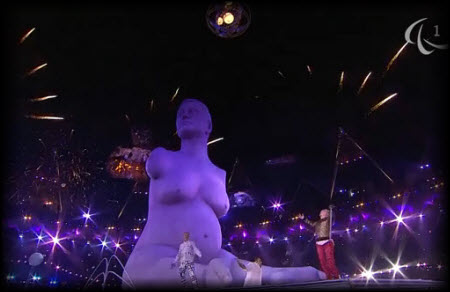
She was the centerpiece of the closing phase of the ceremony. For much of the duration of the show, however, the centerpiece was... the Moon.
The whole ceremony was lunar, and it was in London... together evoking Princess Diana. In this way, we were given another confirmation that the prevalent pregnancy/birth motif pertains mainly (but not exclusively) to the late princess's Arthurian descendants/family/bloodline. Kate Middleton while not related by blood is a worthy successor to Diana and is more than ready to bring a new life into this world with Prince William. My projection has always been that she would likely get pregnant in 2012 and give birth in the 2012-2013 time frame (naturally looking at 2013 now). We are talking " Grail bloodline" here and there was a blatant foreshadowing in the form of NASA's GRAIL twin probes entering orbit around the Moon right at the start of 2012 on New Year's Eve/Day. "GRAIL" here stands for " Gravity Recovery and Interior Laboratory".
As it happens August 29 is also New Year's Day ("1 Thoth") of the (Alexandrian) ancient Egyptian calendar. In ancient Egypt New Year's Day signified rebirth via the combination of the heliacal rising of Sirius and the annual inundation ("water breaking") of the Nile. Everything fits just beautifully. Pattern projected and fulfilled. At this stage there should be no denying that the pattern is real.
Golden Apple
We can start looking ahead using the same general pattern and specifically the golden apple which was conspicuously floating around at the opening ceremony on August 29. 
Thrown into a party, a golden apple becomes an unmistakable omen.... hinting at what amounts to a world war. Great chaos. That's the basic story of the Golden Apple of Discord in Greek mythology: goddess Discordia/Eris throws a golden apple with the inscription "for the fairest" into a wedding banquet, followed by a beauty contest, then the "abduction" of Helen as a direct consequence, sparking the Trojan War (ancient world war).
From my multicontextual point of view, it's no coincidence that the first impact event of 2012 was the Costa Concordia cruise ship disaster off Italy. "Concordia" is obviously the opposite (= upside down, like the wrecked ship) of "Discordia" (Eris) who threw the golden apple. Strong resonance there.
No coincidence especially if you take into account the fact that London was originally called "New Troy" according to legend...

...and the fact that soon after the Paralympics great chaos was unleashed in the world starting around 9/11 (= big chaos/war date) coinciding with another big "Apple" event (iPhone 5):


Orange Alignment
Time: ~October 20, 2012
Themes: Golden apple/Orange, Chaos, Birthquake
For many years now we've been tracking what we call the "Orange Alignment" i.e. a heliocentric lining up of Venus, Sun and Mercury. I've shown many times before that when they come, we do feel their impact. It is my view that the next one coming up soon is a highly charged one... because, for one, in many languages the fruit orange is called... "golden apple".
 
The Orange Alignment will be formed in our solar system on ~October 20, 2012, like this:
Making it even more ominous, the alignment angle pinpoints the Earth's orbital position on January 12-13 (annual), which is the exact date of this year's Costa Concordia disaster (= Discordia => golden apple/orange) as well as the devastating Haiti earthquake (Birthquake) back in 2010. (Orange Alignments are often "earth changes" markers.)

That, to me, just does not look good. Some kind of big impact appears to be in the offing there (directly or indirectly) and I would expect it to continue to express the same underlying themes, but more intensely. Hopefully it's more about things like the Royal Pregnancy, Mars, etc. rather than severe earth changes, war, and such. There are obviously many possible scenarios and we may well be looking at multiple events (or just strong signals) unfolding simultaneously or in quick sequence.
I should also mention that there are other aspects of the whole golden apple business that points its temporal finger squarely at the year 2013. As well, before we even get there we'll have... certain things coming later this year which we'll need to talk about soon.
Enough for now. Thanks for reading!
https://www.goroadachi.com/etemenanki/golden_apple.html |
|
|
|
Reply |
Message 22 of 35 on the subject |
|
|
|
|
Reply |
Message 23 of 35 on the subject |
|
|
|
|
Reply |
Message 24 of 35 on the subject |
|
   
St Mary Magdalene Church is a church in Sandringham, Norfolk, England, located just to the southwest of Sandringham House. Members of the British Royal Family attend services when in residence at Sandringham, which normally includes Christmas.[1] The church is dedicated to Mary Magdalene, a disciple of Jesus. The rector is the Reverend Canon Paul Williams.[2]
History[edit]
 The chancel
The Grade II* listed[3] church is dedicated to Mary Magdalene[4] and is described as a small building in the Perpendicular style, "nobly lying on raised ground".[5][6] The current building dates to the 16th century and was restored by S. S. Teulon in 1855 and Arthur Blomfield in 1890. It is considered to be a noteworthy example of a carrstone building.[7][8] It is located in the park and is approached from Sandringham House through the garden by "an avenue of fine old Scotch firs".[6]
Much of the decoration and the church's stained glass in the east window was created by Charles Eamer Kempe whom King Edward VII had also commissioned in 1903 to create a stained glass window for Buckingham Palace of his eldest son, Prince Albert, Duke of Clarence.[9][10] The church's silver altar and reredos, created by the silversmiths Barkentin & Krall, were presented to Queen Alexandra by the American department store owner Rodman Wanamaker as a tribute to Edward VII. He also presented her with the silver pulpit and a silver 17th-century Spanish processional cross. Of note also is a Florentine marble font and a Greek font dating to the 9th-century.[7][11]
Burials[edit]
There are memorials to many members and relations of the Royal Family in the church and churchyard. Prince John (12 July 1905 – 18 January 1919) is buried here. After his death in February 1952, the body of King George VI was placed in the church for two days prior to its lying in state in Westminster Hall.[12]
Baptisms[edit]
The church has been the site of many royal baptisms. These baptisms include:[13][14]
|
|
|
|
Reply |
Message 25 of 35 on the subject |
|
A still recovering Pope Francis makes surprise visit to basilica Santa Maria Maggiore in Rome
By Euronews
Published on 12/04/2025 - 20:09 GMT+2•Updated 20:13
On Saturday afternoon Pope Francis went to the basilica of Santa Maria Maggiore to pray.
In another surprise visit by Pope Francis early Saturday afternoon, Vatican sources confirmed that the Pontiff visited the basilica of Santa Maria Maggiore in Rome and stopped to pray before the icon of the Virgin, Salus Populi Romani, on the eve of Palm Sunday and Holy Week.
The Pope's previous surprise events
On Thursday, Pope Francis visited St. Peter's Basilica to check the progress of the restoration of two funerary monuments, those of Popes Paul III and Urban VIII, whose works will be presented on Sunday.
Before moving on to the tomb of Pius X, where he gathered in prayer, the pope, who was wearing trousers and a poncho instead of his usual white suit, met two restorers who were on site to carry out the final touches. He had them called by the Vatican gendarmerie and thanked them in person.
The Pope is still recovering after a long stay at the Gemelli polyclinic with double pneumonia. Nonetheless, he met the British royals on Wednesday during an unscheduled interview as they visited Rome. Last Sunday, he appeared in St. Peter's Square at the end of the mass for the Jubilee of the sick and healthcare workers.
https://www.euronews.com/2025/04/12/a-still-recovering-pope-francis-makes-surprise-visit-to-basilica-santa-maria-maggiore-in-r |
|
|
|
Reply |
Message 26 of 35 on the subject |
|
Contact via Earthquakes
Pentagonal Stargate Activation 2010
February 27, 2010
by Goro (supertorchritual.com & goroadachi.com)



Enki works in mysterious ways. He sees the angles. He sees the alignments. He understands space. He understands time. It's '2010' and he comes in peace. Contact via earthquakes... This is it. This is how it begins...
Haiti - Chile Alignment...

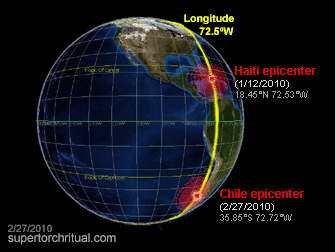

Behold, the Earth-Shaker opens the Pentagonal Stargate...


The pentagram is the symbol of Venus. Venus is the goddess/planet of love. Love in many languages is amor. Amor is the reverse of Roma. As they say, all roads lead to Rome. Even the pentagram. The Pentagonal Contact Sequence started back on April 6, 2009 near Rome...


Orbitally reversed and it becomes Megafault starring Brittany Murphy (who had an Italian father linked to the mob)...

...whose untimely death marked the winter solstice 2009 at the apex of the pentagonal 'V' apex.
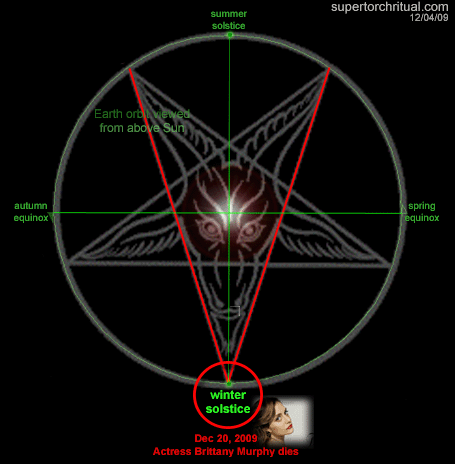
'Vs' of course come in peace...


...through a Pentagonal Stargate

...and an earthquake.

'Knee' = Rome in leg-shaped Italy...

'Ring' = Pacific (= 'peace') Ring of Fire...
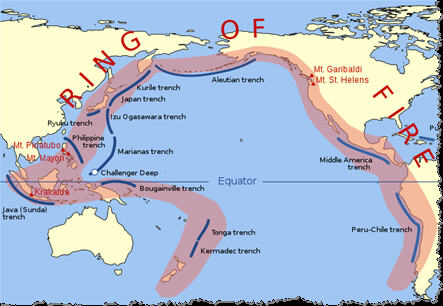
Chile is in the Ring of Peace/'V'...
And 'V' is balloons...

...reenacted right before the 'V' premiere (Nov 3, 2009)
via Balloon Boy on Oct 15...


...which was orbitally 'stereo aligned' with Feb 25-26,
or the Chile 'Big One' (Feb 27).

Contact via earthquakes = Contact with V = Contact with Peace = Contact with Love (Rome, Venus) = Contact via Pentagram
All in the 'Big One' space-time geometric overlay...

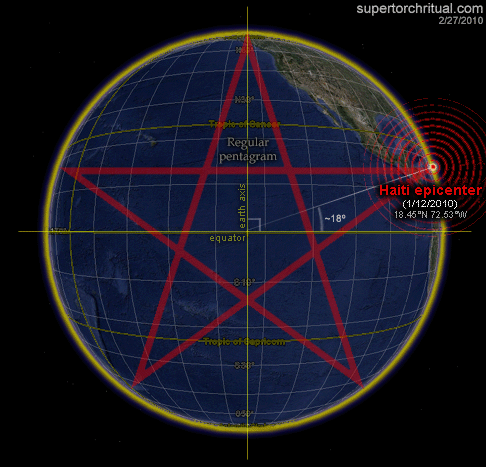

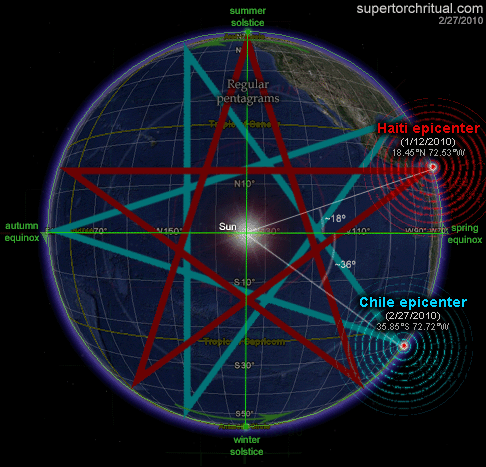

And that's how Contact is being made in 2010.
Just the tip of the iceberg.
* * *
NOTE: For those new here, please note that this strange thing that I do on this website is not the typical hindsight-driven dot connecting stuff that you may have seen out there. Here, much emphasis is placed on foresight. I regularly make predictions or multicontextual pattern projections to demonstrate that it is something very real - albeit 'impossible' according to the current paradigm - that I discuss and try to show again and again. So, for instance, even though I decided not to bring it up in the main text of the article purely for readabililty, both the April 2009 Italian earthquake and the January 2010 Haiti 'Big One' were, to a considerable degree, projected beforehand. (See here & here - the latter not including STRUG entries thus appearing less impressive than what was actually going on 'underground' projection-wise.) Even the latest Chile mega-quake was no surprise around here (especially on STRUG) - evidenced by the fact that I was able to quickly write up and post this article within 24 hours of the catastrophe. For many months, in fact, I kept highlighting the Vancouver Olympics (Feb 12-28) and its general timeframe, based on various patterns, in particular the following golden/phi-based timecode which had 'Big One' (mega-quake) written all over it.

Not surprisingly, there was to be further twists which I was able to closely follow, leading me to make a necessary adjustment just in time for (i.e. before) the early-January quakes including Haiti. (I haven't yet fully explained what caused me to make the adjustment but that it was a valid move is obviously not in question.) After Haiti, the status of the February 2010 window became uncertain - was it still radioactive or had it released all its energy in January? We now know the answer: Another small time shift, another 'Big One' (this time in Chile), coming the day before the closing ceremony of the 'V Olympics' instead of the opening ceremony. And it was decidedly pentagonal in nature. This is important because in addition to what's already been discussed the pentagram is nearly synonymous with (i.e. found encoded in its geometry) the golden ratio, i.e. '1 : 1.618', therefore linking back to the phi-based timecode above.

* * *
To be continued...
https://www.goroadachi.com/etemenanki/contact-penta-quakes.htm |
|
|
|
Reply |
Message 27 of 35 on the subject |
|
|
|
|
Reply |
Message 28 of 35 on the subject |
|
|
|
|
Reply |
Message 29 of 35 on the subject |
|
|
|
|
Reply |
Message 30 of 35 on the subject |
|
|
|
|
Reply |
Message 31 of 35 on the subject |
|
|
|
|
Reply |
Message 32 of 35 on the subject |
|
|
|
|
Reply |
Message 33 of 35 on the subject |
|
|
|
|
Reply |
Message 34 of 35 on the subject |
|
|
|
|
Reply |
Message 35 of 35 on the subject |
|
|
|
 First First
 Previous
21 a 35 de 35
Next Previous
21 a 35 de 35
Next
 Last
Last

|











![Stream Pink Floyd Dark Side Of The Moon (1973) [Álbum Completo] by Nassart S | Listen online for free on SoundCloud](https://i1.sndcdn.com/artworks-radG9QldSU4x7yvf-TxiHbA-t500x500.jpg)

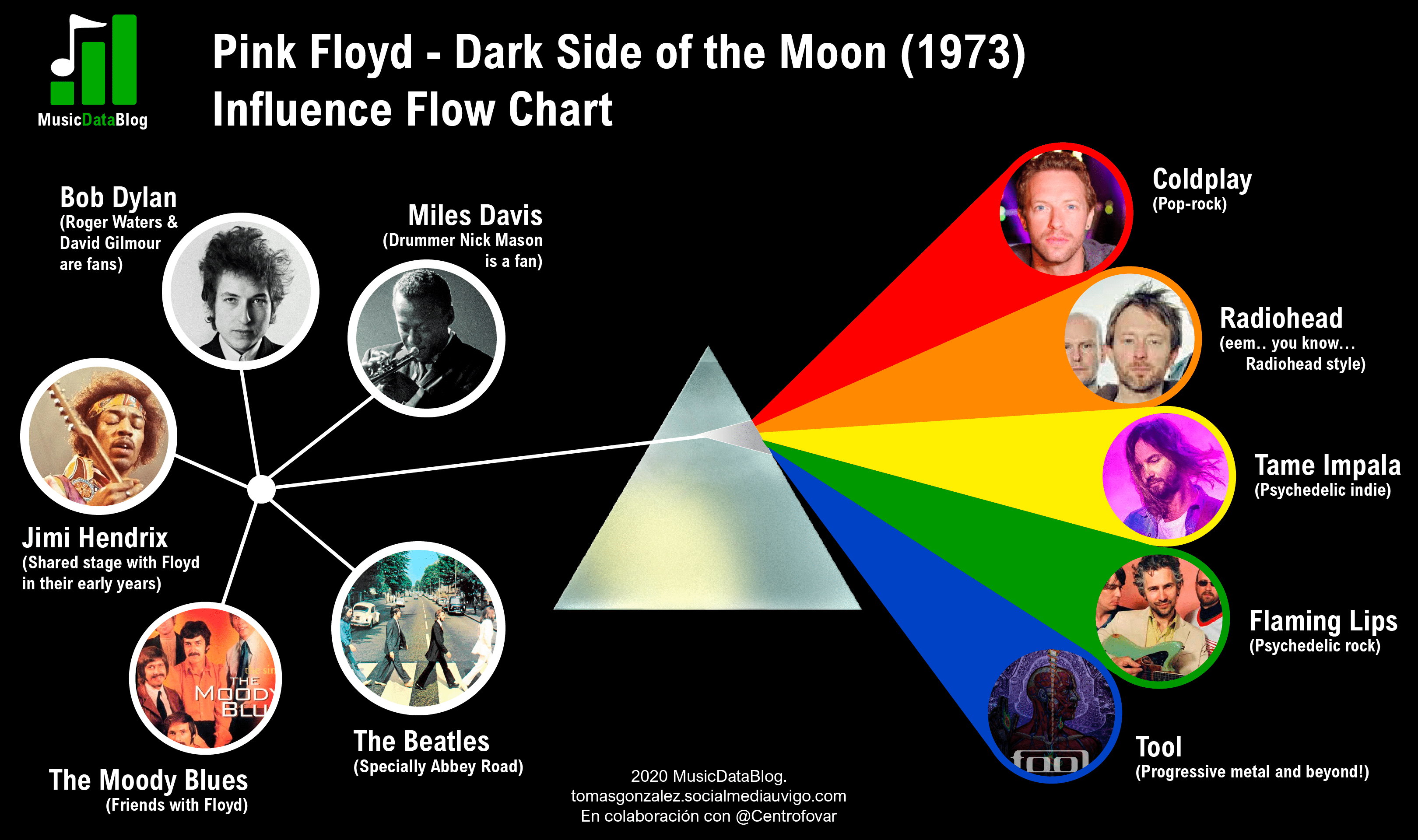




 Aug 26
Aug 26 




































